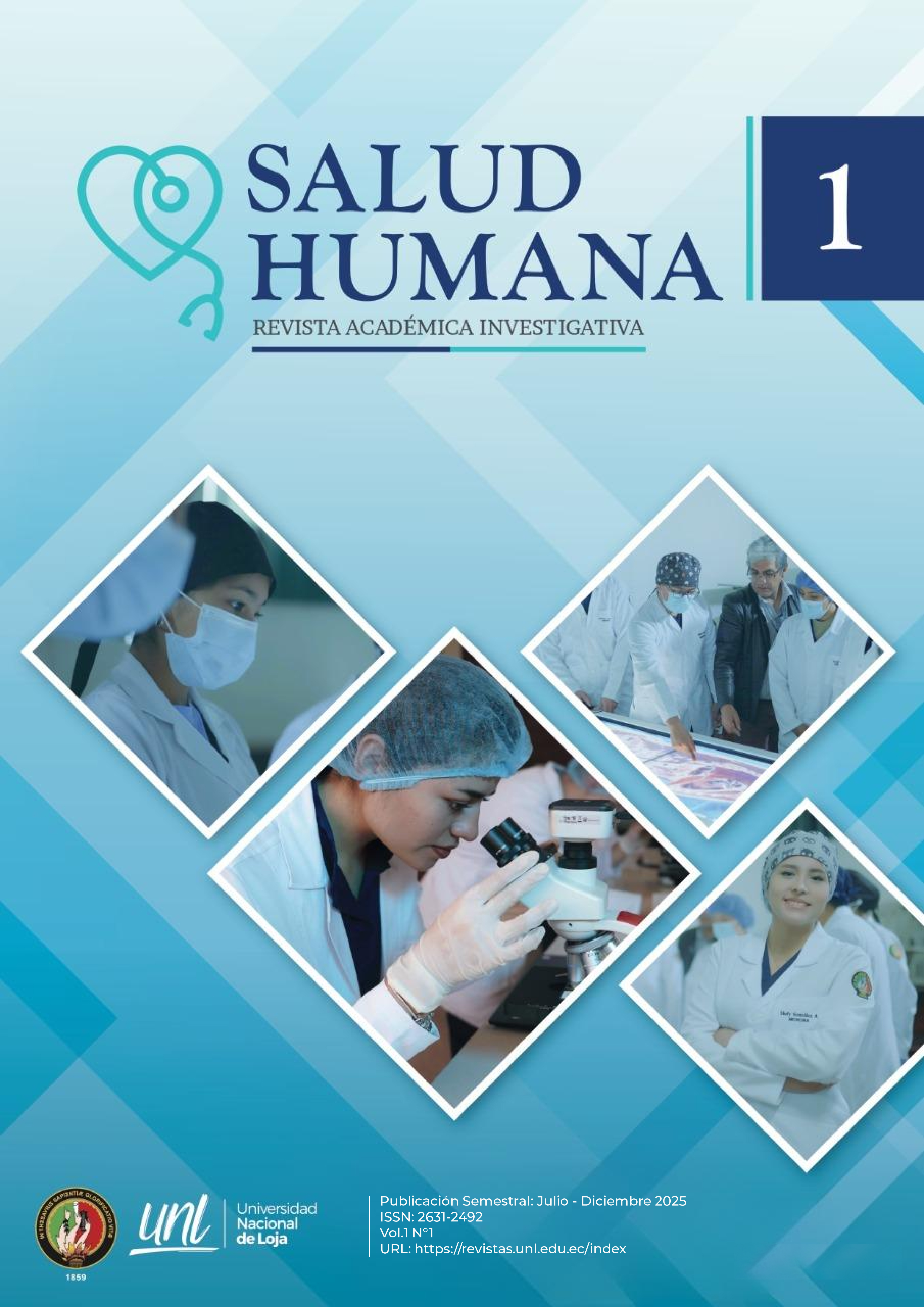Case Report: Herpes Zoster in a Patient with Idiopathic Leukocytoclastic Vasculitis
DOI:
https://doi.org/10.54753/rsh.v1i1.2508Keywords:
Vasculitis, herpes zoster, antiviralAbstract
Leukocytoclastic vasculitis (LCV) is a small-vessel inflammation characterized by palpable purpura, predominantly affecting the lower extremities. Its etiology includes infections, medications, autoimmune diseases, and neoplasms; however, in many cases it is classified as idiopathic. Although viral infections are commonly considered potential triggers of vasculitis, viral reactivation secondary to a primary vasculitic process or its immunomodulatory treatment is a rarely reported phenomenon. We present the case of a 27-year-old previously healthy male who sought medical attention due to the appearance of petechiae on both lower limbs after practicing contact sports and episodes of stress. Clinical progression included purpuric macules, hemorrhagic vesicles, and joint pain, which led to the diagnosis of leukocytoclastic vasculitis. Treatment with corticosteroids and colchicine failed to control disease progression, and new vesicular lesions appeared, compatible with varicella-zoster virus (VZV) infection. Diagnosis was confirmed via a positive Tzanck test and peripheral blood smear showing reactive lymphocytes. It is proposed that herpetic reactivation was secondary to vasculitis and corticosteroid-induced immunosuppression. The patient successfully completed antiviral therapy and a gradual corticosteroid tapering protocol, with favorable clinical outcome. This case highlights the importance of considering latent viral infections as potential complications of inflammatory diseases and their treatment, especially in young, otherwise healthy patients. A broad diagnostic approach is key to avoiding delays in targeted therapy and preventing complications.References
[1] Álvarez-Ruiz, S., & García-Díez, A. (2004). Reacciones granulomatosas secundarias a herpes zóster. Actas Dermo-Sifiliográficas, 95(9), 1051–1055. https://doi.org/10.1016/S0001-7310(04)75533-2
[2] Álvarez Nebreda, M., Vidan Astiza, M. T., Marañón Hernández, E., & Serra Rexacha, J. A. (2000). Vasculitis leucocitoclástica secundaria a infección respiratoria. Revista Española de Geriatría y Gerontología, 35(5), 300–303. https://doi.org/10.1016/S0211-139X(00)70141-3
[3] Afacan, E., Öğüt, B., Erdem, Ö., & Adışen, E. (2022). Herpes zóster asociado con vasculitis cutánea de pequeños vasos: Informe de un caso raro con revisión de la literatura. Indian Journal of Dermatology, 67(5), 626. https://doi.org/10.4103/ijd.ijd_1001_21
[4] Cohen, J. I. (2013). Clinical practice: Herpes zoster. The New England Journal of Medicine, 369(3), 255–263. https://doi.org/10.1056/NEJMcp1302674
[5] Furuoka, K., Fukumoto, T., Masuda, Y., & al. (2023). Segmental cutaneous leukocytoclastic vasculitis associated with herpes zoster: A case report and literature review. Dermatology Reports, 15(4), 9709. https://doi.org/10.4081/dr.2023.9709
[6] Plaza Santos, R., Jaquotot Herranza, M., Froilán Torres, C., Poza Cordón, J., Casado Verrier, B., de Tena Díaz-Agero, F. L., Vázquez López, P., & Suárez de Parga, J. M. (2010). Vasculitis leucocitoclástica asociada a enfermedad de Crohn. Gastroenterología y Hepatología, 33(6), 433–435. https://doi.org/10.1016/j.gastrohep.2009.07.004
[7] Redondo Fernández, M., Costillo Rodríguez, J., & Jiménez Rodríguez, M. (2007). Abordaje de la neuralgia postherpética en Atención Primaria: situación actual del tratamiento farmacológico. Medicina de Familia, 33(6), 300–308. https://doi.org/10.1016/S1138-3593(07)73853-4
[8] Rodríguez, G., Acosta de Camargo, M. G., & Acosta Torrealba, M. I. (2022). Vasculitis leucocitoclástica debido a reactivación del virus varicela zóster. Revista Odontológica Mexicana, 25(3). https://doi.org/10.22201/fo.1870199xp.2021.25.3.83097
[9] Shah, P., Roman, J., Brinster, N., & Femia, A. (2021). A case of synchronous herpes zoster infection and leukocytoclastic vasculitis localized to the same dermatome. JAAD Case Reports, 14, 52–54. https://doi.org/10.1016/j.jdcr.2021.05.011
[10] Younger, D. S., & Carlson, A. (2019). Dermatologic aspects of systemic vasculitis. Neurologic Clinics, 37(3), 371–388. https://doi.org/10.1016/j.ncl.2019.01.017
[11] Wickremasinghe, S. S., Stawell, R., Lim, L., Pakrou, N., & Zamir, E. (2009). Non-necrotizing herpetic vasculitis. Ophthalmology, 116(2), 361. https://doi.org/10.1016/j.ophtha.2008.09.043




